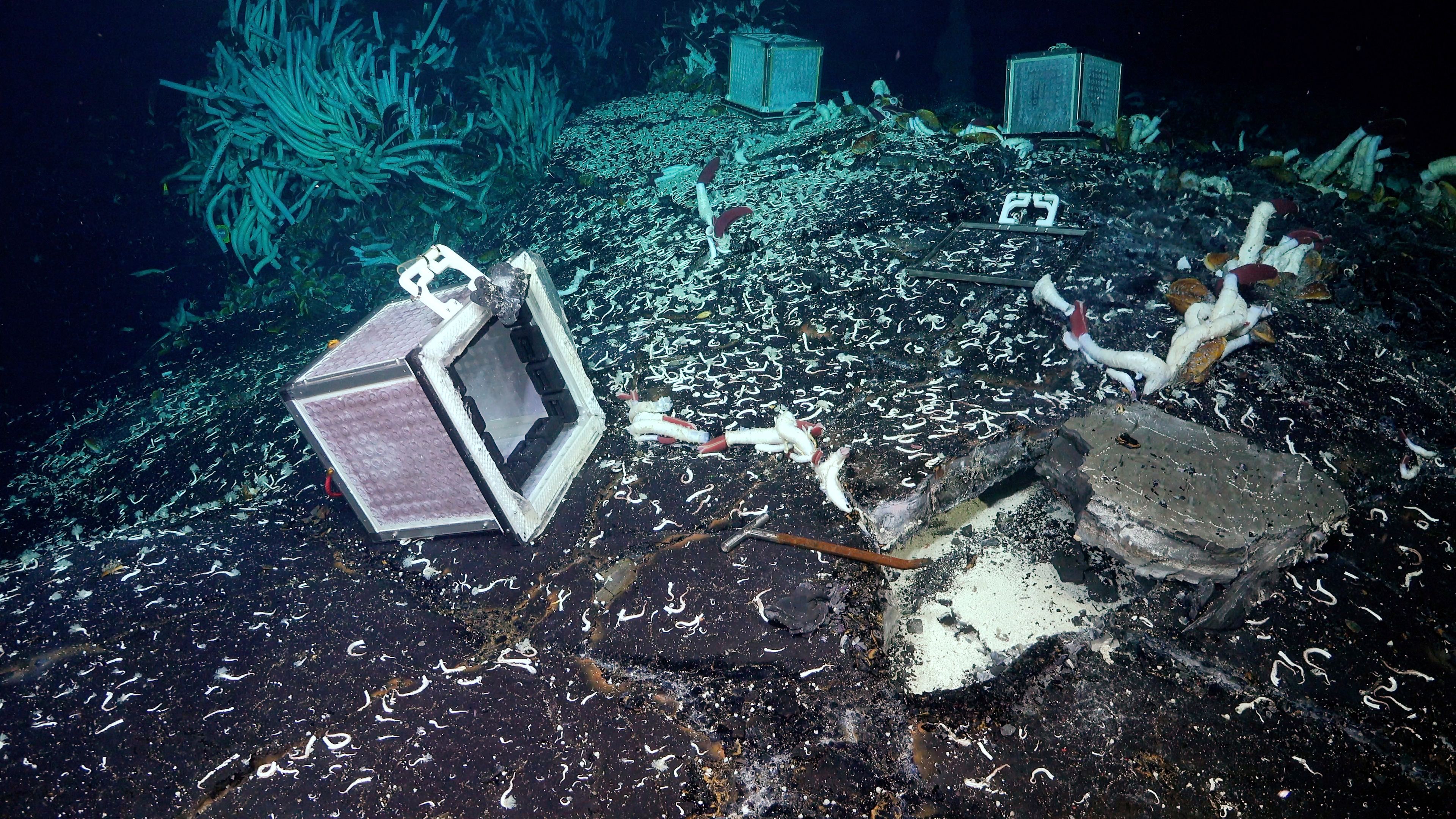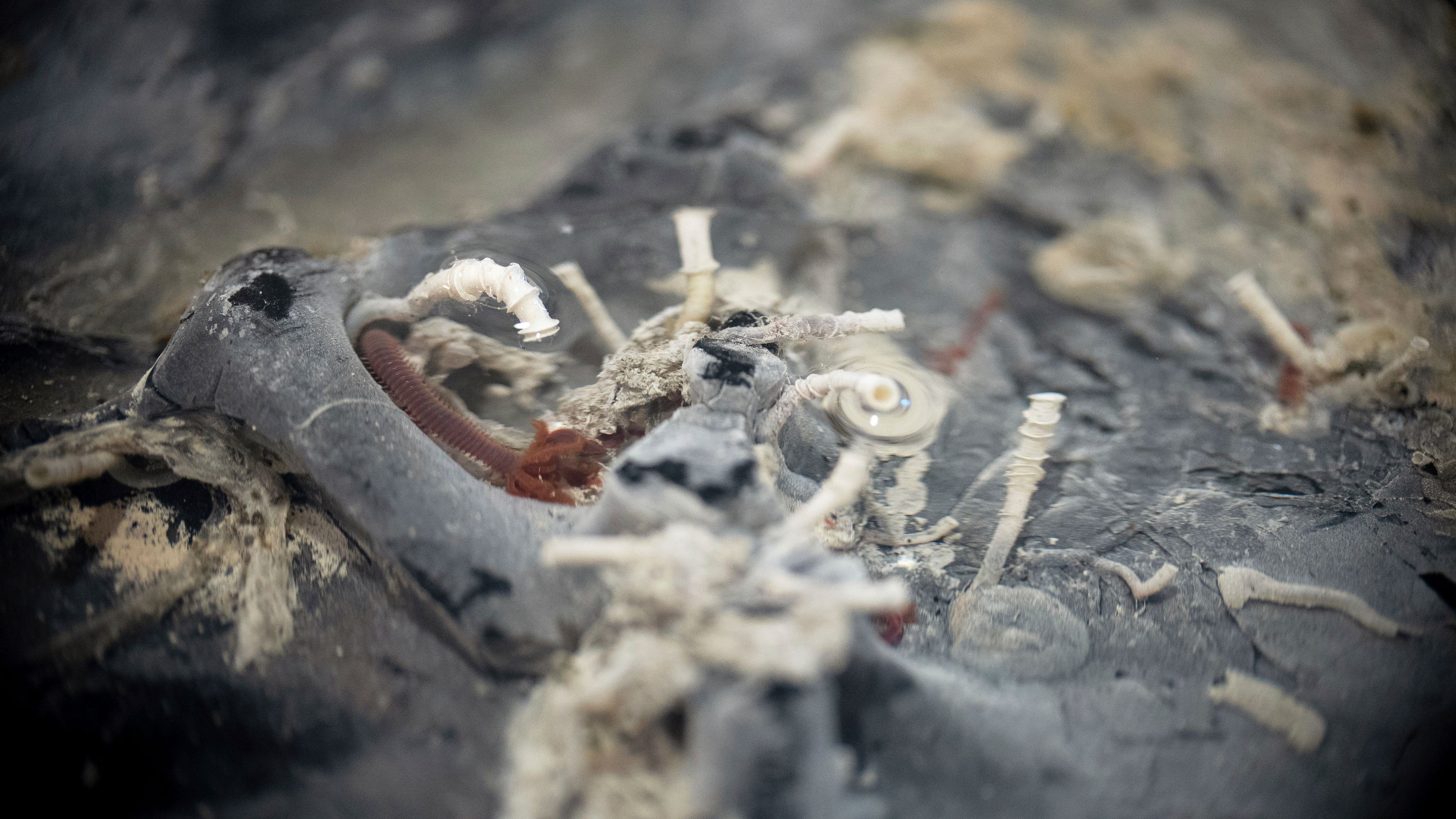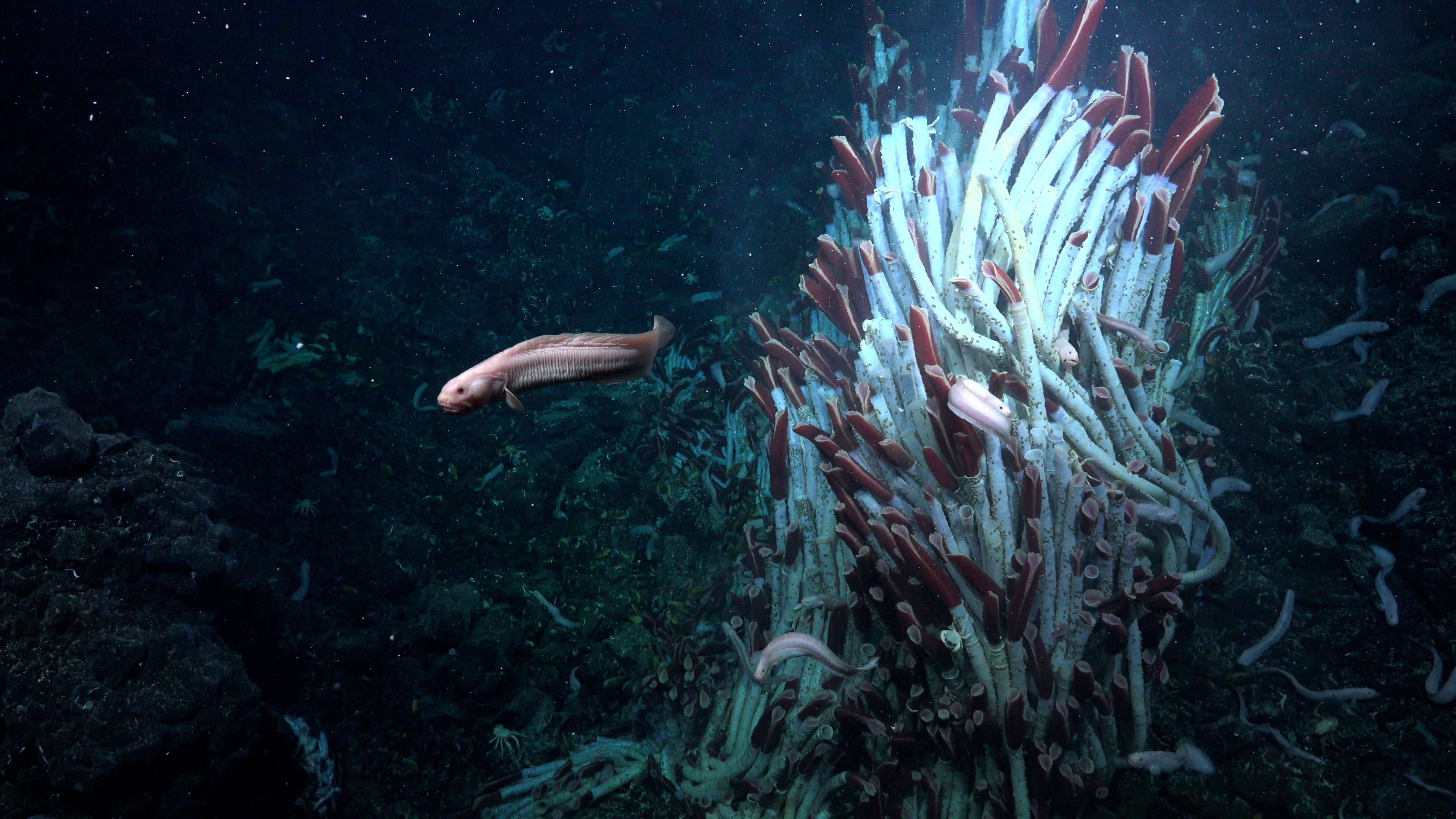Tubeworms, snails and other weird creatures found under the seafloor
NEW YORK (AP) — Scientists for the first time have uncovered an underworld of animal life thriving beneath the seafloor.
NEW YORK (AP) — Scientists for the first time have uncovered an underworld of animal life thriving beneath the seafloor.
An expedition to a volcanically active ridge in the Pacific off South America has revealed worms, snails, giant tubeworms and other strange creatures lurking below steamy underwater hot springs.
Researchers have long studied animal communities near such hydrothermal vents. Many thought only microbes and viruses could survive underneath. To their surprise, an underwater robot last summer overturned volcanic slabs and found diverse life under the vents.
“This was totally unexpected,” said study co-author Sabine Gollner with the Royal Netherlands Institute for Sea Research.
Young critters from above the seafloor could be traveling through the vents to settle in the depths, Gollner said.
The research published Tuesday in the journal Nature Communications.
Future studies will help reveal whether colonies of animal life exist below other hydrothermal vents around the globe.
“This is an initial discovery that's really promising,” said Jason Sylvan, a microbiologist at Texas A&M University who was not involved with the research.
___
AP video producer Zara Eldridge contributed to this report from London.
___
The Associated Press Health and Science Department receives support from the Howard Hughes Medical Institute’s Science and Educational Media Group. The AP is solely responsible for all content.
Connect with the Southeast Missourian Newsroom:
For corrections to this story or other insights for the editor, click here. To submit a letter to the editor, click here. To learn about the Southeast Missourian’s AI Policy, click here.











